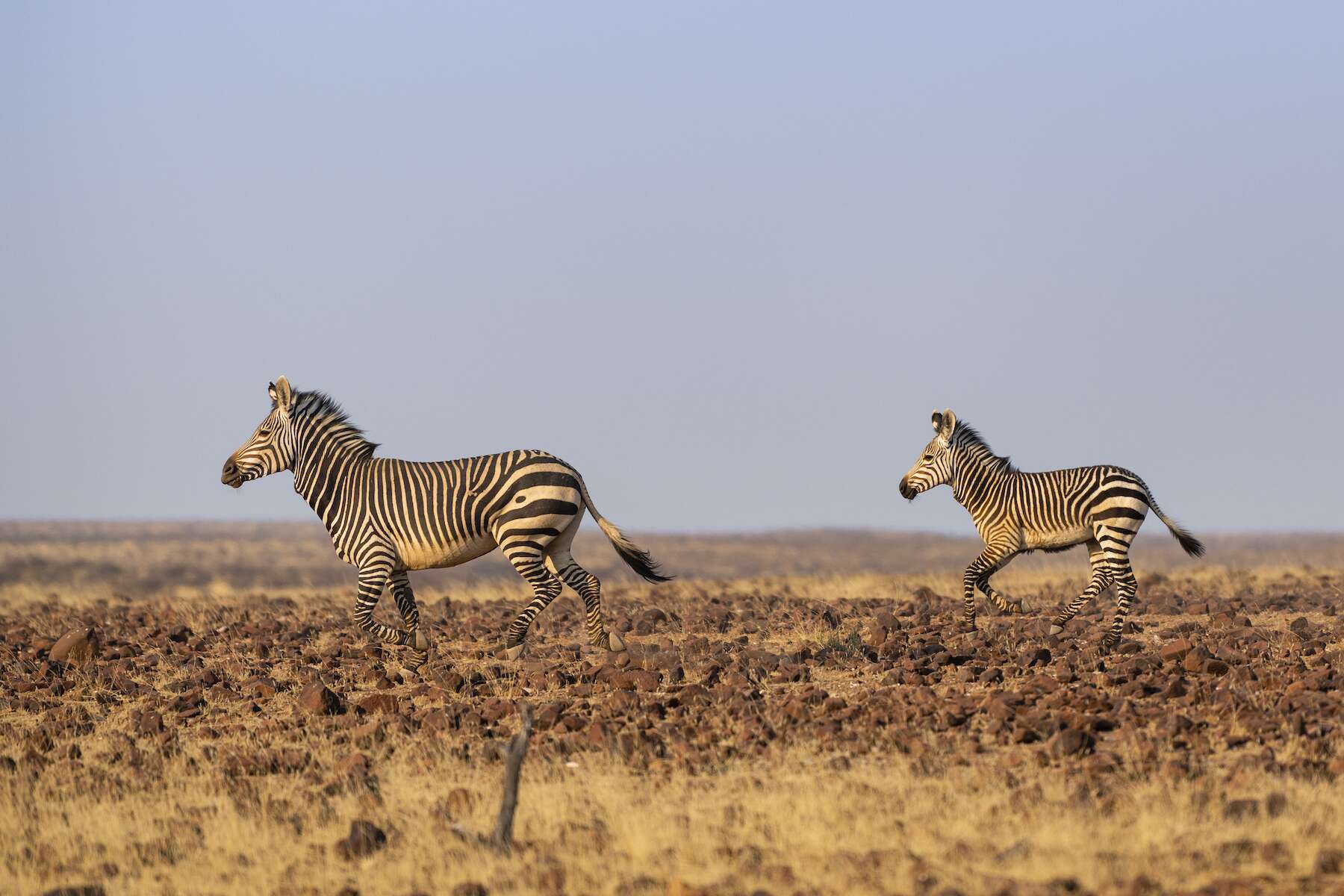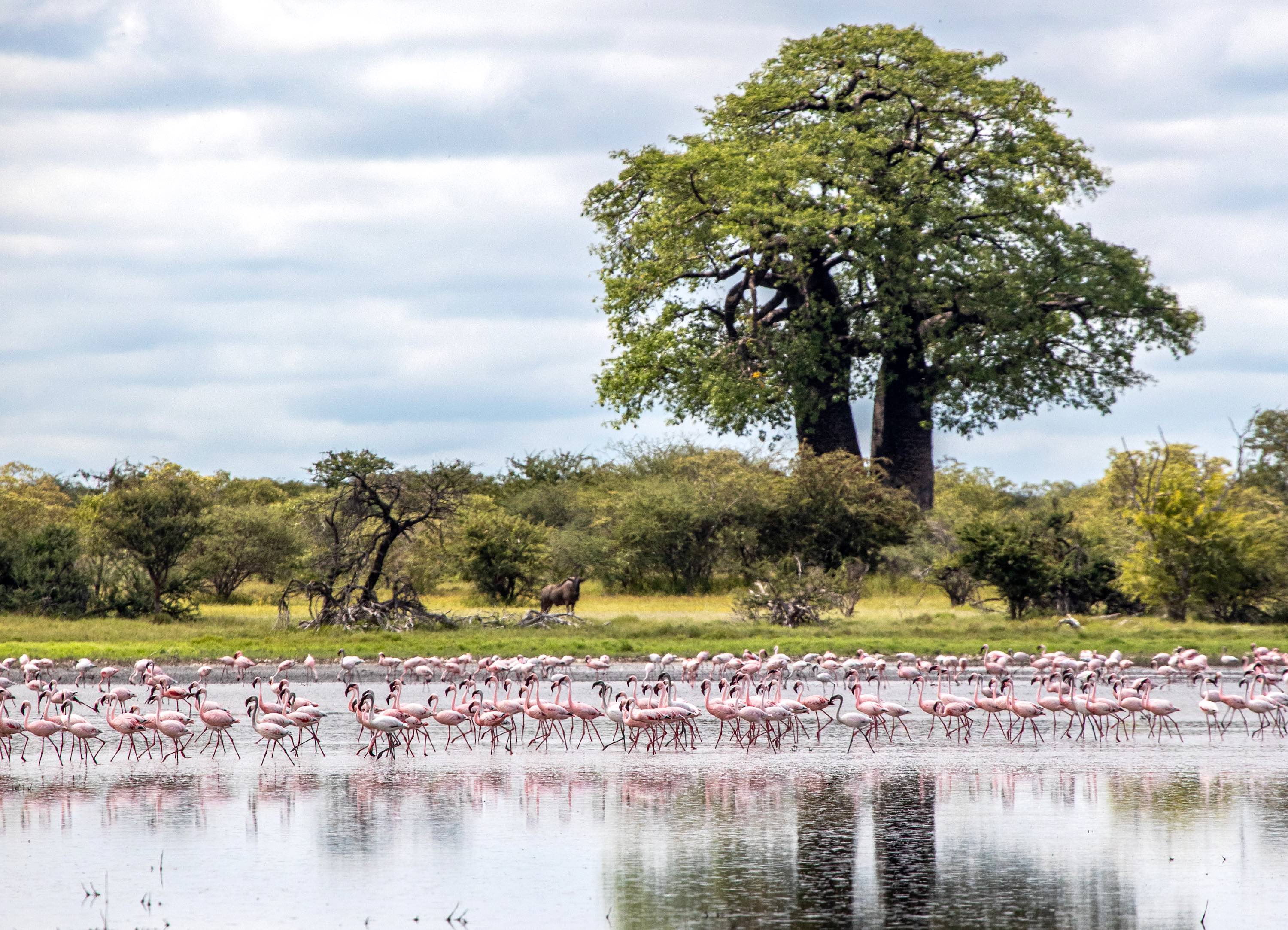
The Nyae Nyae Pangolin Project: benefitting people and pangolins
7th November 2023
7th November 2023
The Nyae Nyae Conservancy (NNC) is the first conservancy registered in Namibia and at 8,992 km2 the second largest. The conservancy borders Khaudum National Park and is part of the Kavango-Zambezi Transfrontier Conservation Area (KAZA TFCA) shared by Namibia and four neighbouring countries. This extensive wildlife habitat combined with the culture of the indigenous San Ju/'hoansi tribe living in NNC makes it an ideal area for pangolin conservation. The Ju/'hoansi already protect pangolins as part of their cultural belief systems – with the establishment of the Nyae Nyae Pangolin Project they now reap tangible benefits from pangolin conservation and research.
The San people believe they must protect pangolins because when the pangolin walks, it whistles a song to call the rains, which are essential for survival in the dry, hot Kalahari bushveld. They also believe that killing a pangolin could cause a year of bad rains, and that if you pass an area where a pangolin is killed, you will be plagued with a severe nosebleed that will lead to your death if untreated.
The San people's traditional knowledge, superb tracking skills and connection with nature make them excellent pangolin rangers. Unfortunately, job opportunities are extremely limited in this remote area and many people live in poverty. In 2020 the Pangolin Conservation and Research Foundation (PCRF) therefore identified this conservancy as a suitable location for a pangolin research and conservation project.
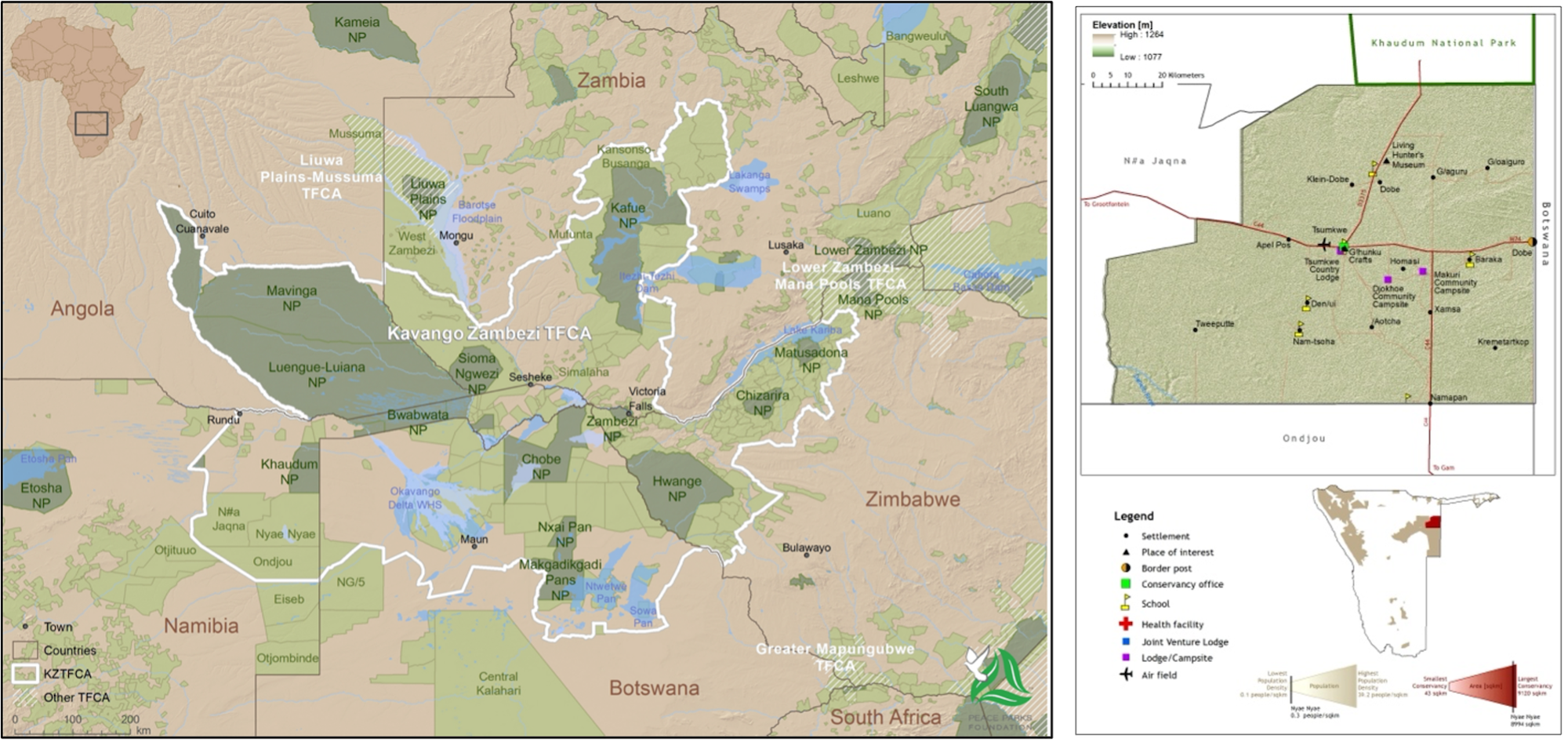
The Nyae Nyae Pangolin Project started in 2021 with the aim of using the ancient tracking skills of the San combined with modern technology to protect this elusive species, while providing jobs and other benefits to the San communities. To date the project has tagged eight free-roaming pangolins thanks to community engagement and outreach across 25 villages. This is the first time Temminck's ground pangolins have been tagged in this habitat (semi-wetland ecosystem and broadleaf Kalahari woodlands) and land-use type (open communal conservancy).
Contributing to pangolin conservation and local livelihoods
Pangolins are the most trafficked mammal worldwide since 2014, yet they remain one of the most under-researched mammal species. Trafficking has been on the rise in Africa to meet demand from Asian markets. Over the last five years 427 pangolins were confiscated in Namibia (118 live and 309 carcasses or skins) and 591 arrests were made. Given the average wildlife crime detection rate (10-18%), numbers are closer to 2,500-4,000 pangolins poached over the past five years. Pangolins are also vulnerable because we do not know their current population and, unlike elephant or rhino poaching that leaves large carcasses, cannot easily detect a poaching incident unless the animal or animal product is confiscated.
The Nyae Nyae Pangolin Project (NNPP) supports communities to conserve this species through employment of local San people as pangolin rangers to locate, tag and monitor pangolins around their home villages. Pangolin rangers are trained as research assistants and equipped with smart phones to collect data relating to pangolins and their environment. The rangers use their traditional knowledge, their understanding of the environment and exceptional tracking skills to produce high quality data.
The results of this research will contribute to conservation planning for the species, including the development of monitoring methods and guidelines. This is one of only two projects in Africa focusing on wild Temminck's pangolins in their natural habitat.
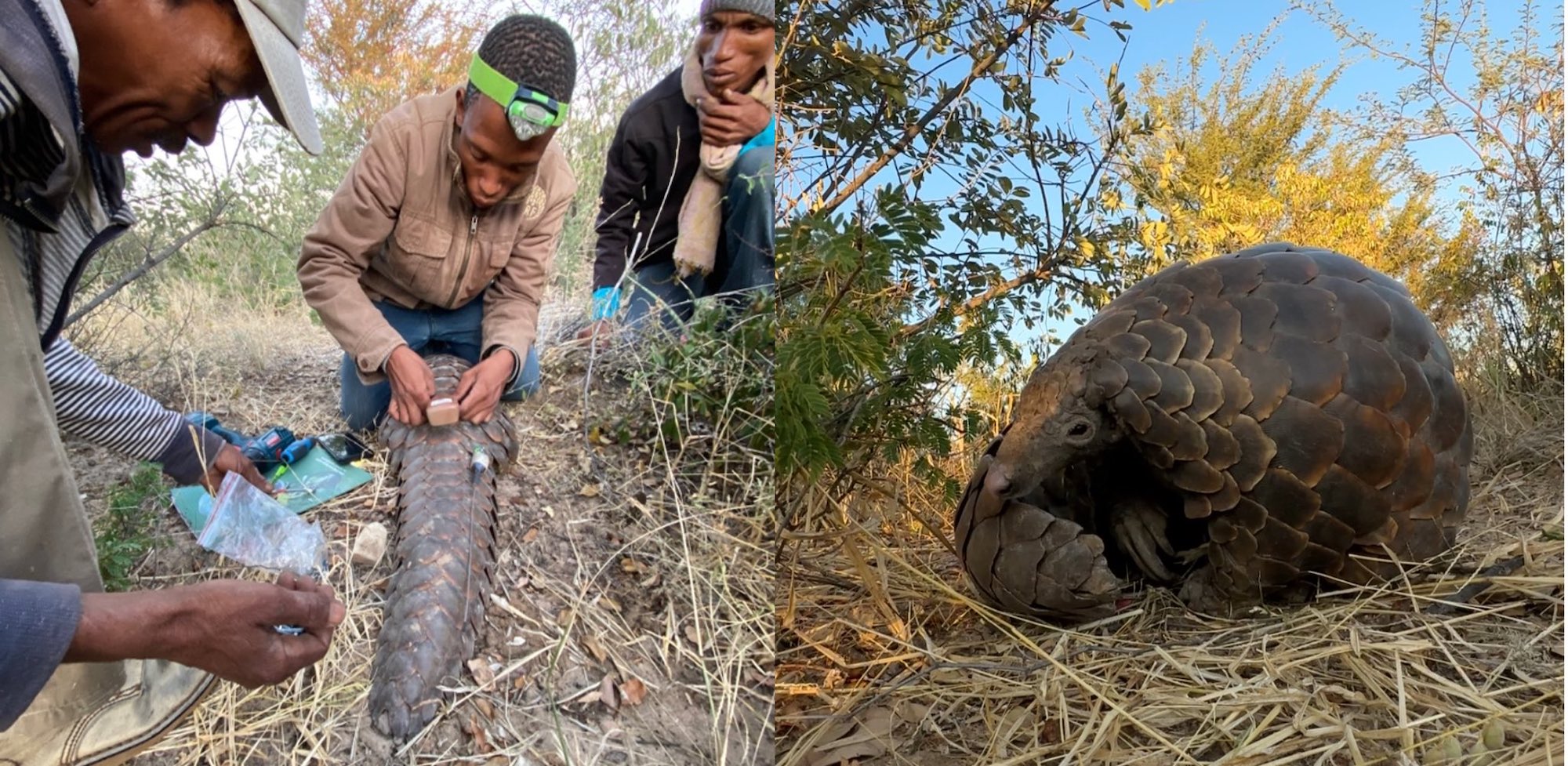
How do we provide support for communities?
Besides permanently employing pangolin rangers, we provide food packages for their families and the communities supporting our work, while we are currently developing the first demonstration garden to increase food security. During our outreach trips to collect information from the nearby villages (we have visited 25 out of 40 in NNC) we bring food in exchange for their time spent sharing information. This information flows both ways: our rangers raise awareness about the plight of pangolins, while the communities share their recent sightings and their perceptions of the species.
If there is information about a sighting, we employ some of their best trackers on a short-term basis to assist our team to confirm the sightings and presence in the area. If a pangolin is tagged, a pangolin ranger is employed in that village full-time. Since the start of the project we have employed 40 short-term trackers and 11 full-time rangers. In addition we distribute donated clothing, blankets and toys in all of the villages we visit.
Raised awareness of the area has led to increased tourism, which contributes directly to the communities through the use of community campsites, participation in traditional activities and by purchasing artisanal crafts as souvenirs. Where possible, we also help upgrade community campsites. To date we have upgraded one community campsite by subsidising the construction of a long-drop toilet and two shower stalls. We have supported other villages by purchasing crafts such as hand-made jewellery and carved wooden animals.
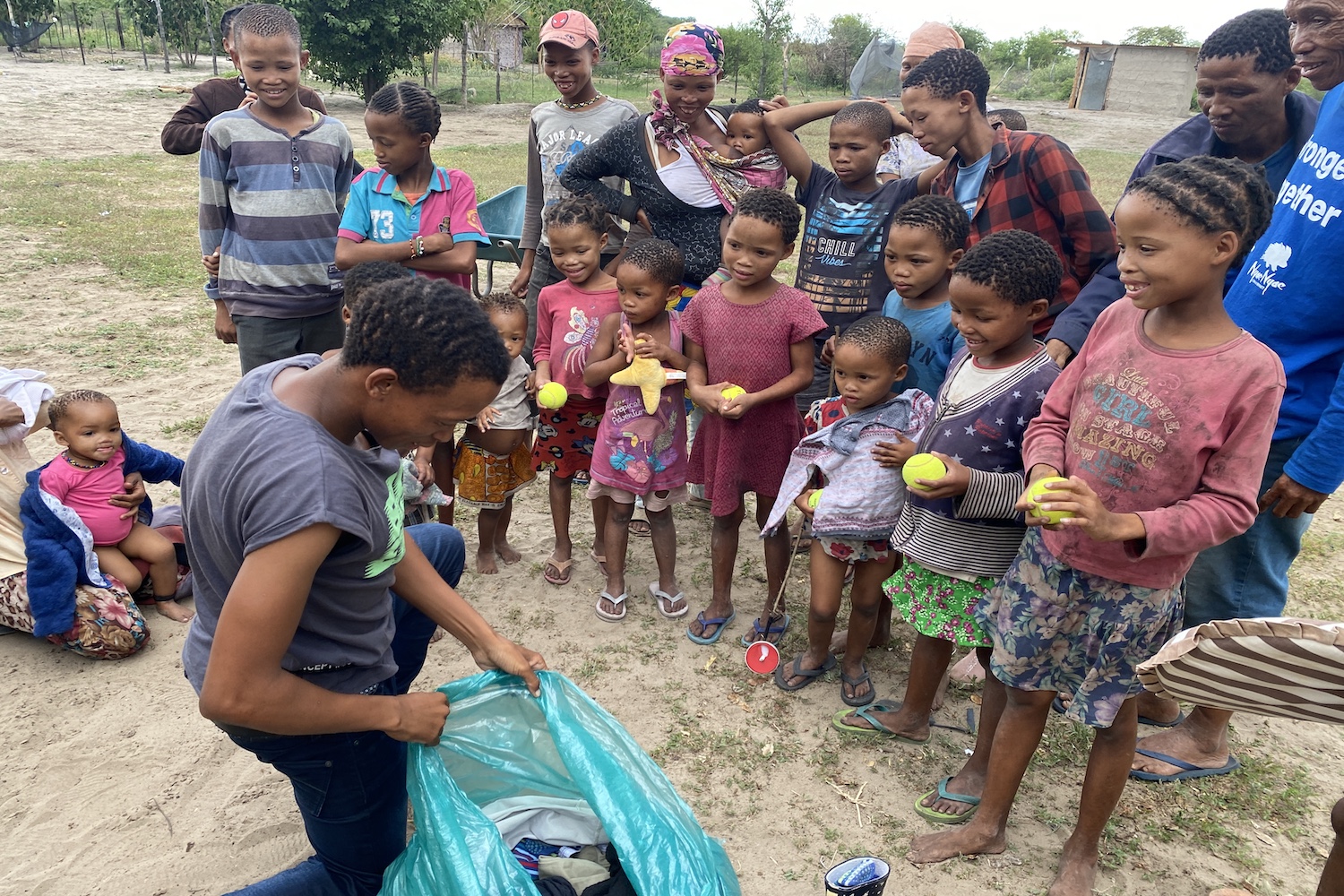
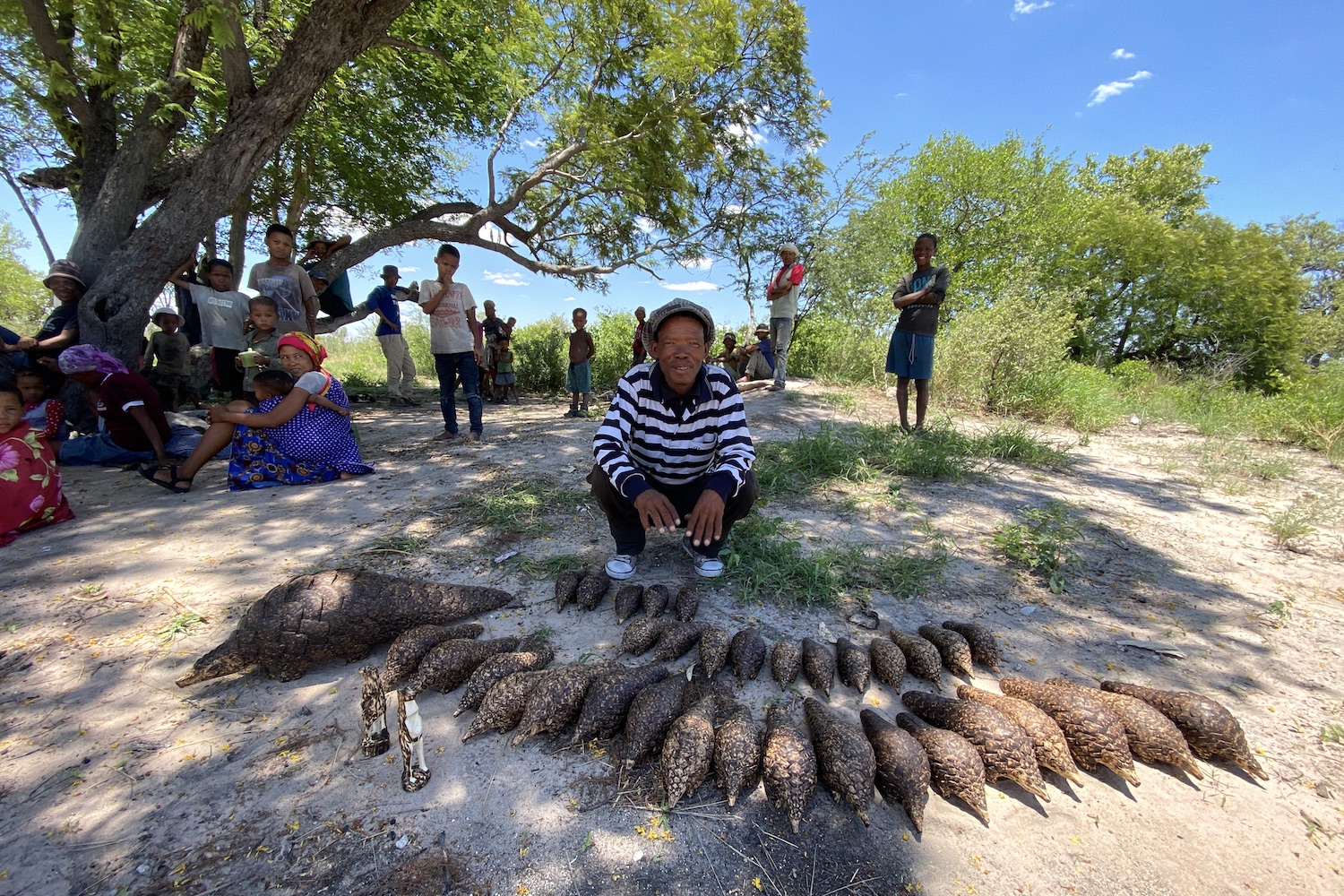
Early research results
All pangolins are tagged with a VHF and GPS transmitter for research and security purposes. Transmitters allow us to collect spatial data to understand home range sizes and dispersal, whereas the pangolin rangers and local trackers identify foraging sites and collect prey samples.
A total of 35 pangolins have been identified in the Nyae Nyae Conservancy so far. Eight of them have been tagged with GPS and VHF since 2021. Five pangolin tags produced enough data to map home range sizes with 1333 spatial data points collected over 22 months. Notably, one of the tracked males had a home range of 96.9 km2 – the largest ever recorded for any pangolin species. Another male was the first pangolin to cross an international border (into Botswana) while being tracked by GPS.
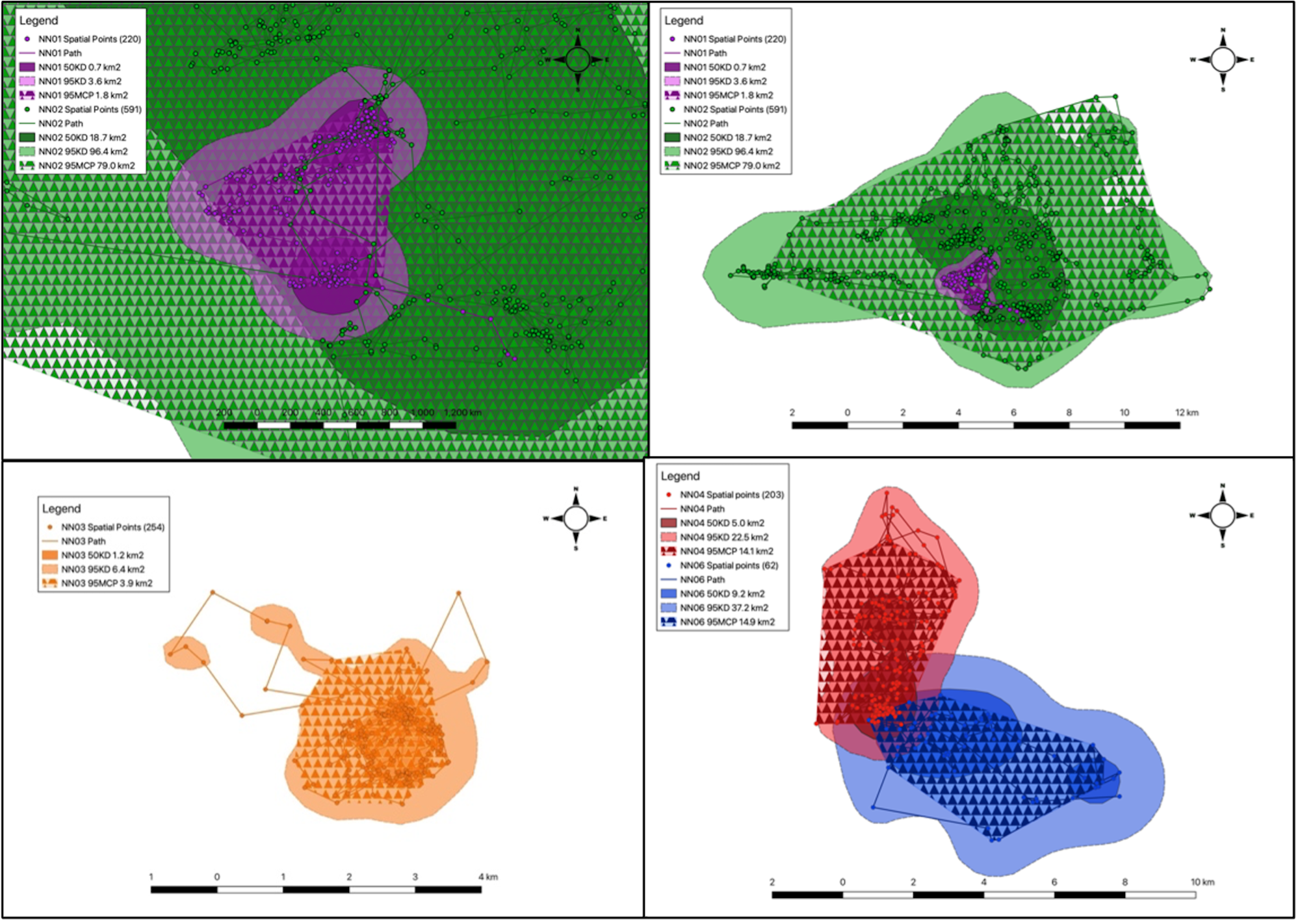
Camera traps are placed at known burrows to monitor pangolin activity and behaviour patterns, and the overlap of burrow use among pangolins and with other species. This information can also contribute to our understanding of the population and to the development of monitoring guidelines. For example, four pangolin pups born between August and December 2023 were caught on camera. Cameras deployed over the past 12 months have recorded 29 mammal species (bat, gerbil and mice; rats couldn't be identified), five reptile species (geckos and skinks; lizards couldn't be identified), and nine bird species.
The research team continuously collects scientific and social data through interviews with the local communities, while also noting sightings of other wildlife species. Community reports have identified two natural deaths of pangolins in the area over the past year. During routine fieldwork the team recorded sightings of African wild dog, cheetah, spotted hyena, striped polecat, African wild cat, honey badger, serval and Mozambican spitting cobra. All results and recommendations from the pangolin research are published in scientific and popular publications and submitted to the Ministry of Environment, Forestry and Tourism for future conservation planning and management. Our records of other key species are logged on public platforms to contribute to the conservation of all species in the Nyae Nyae Conservancy.
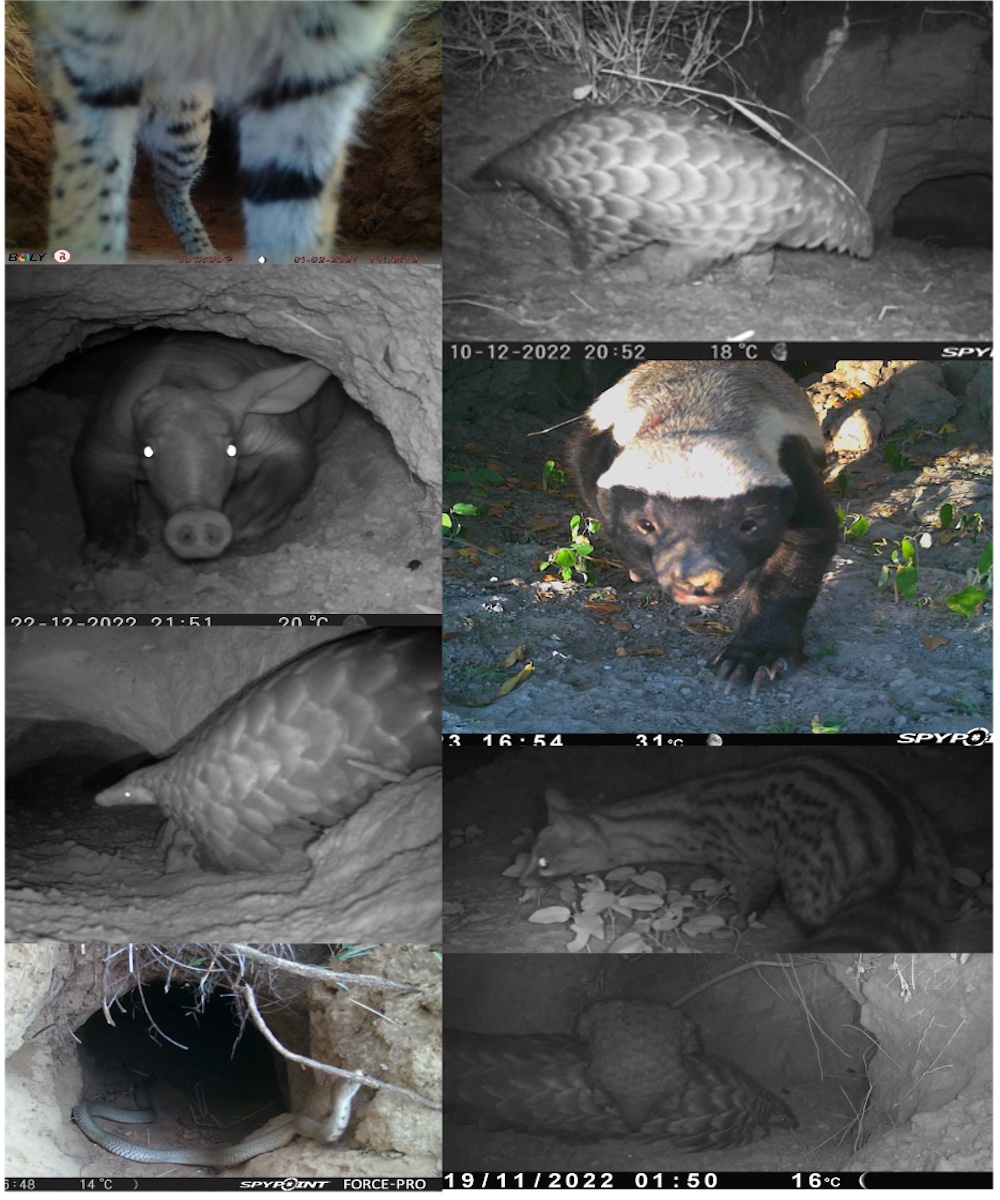
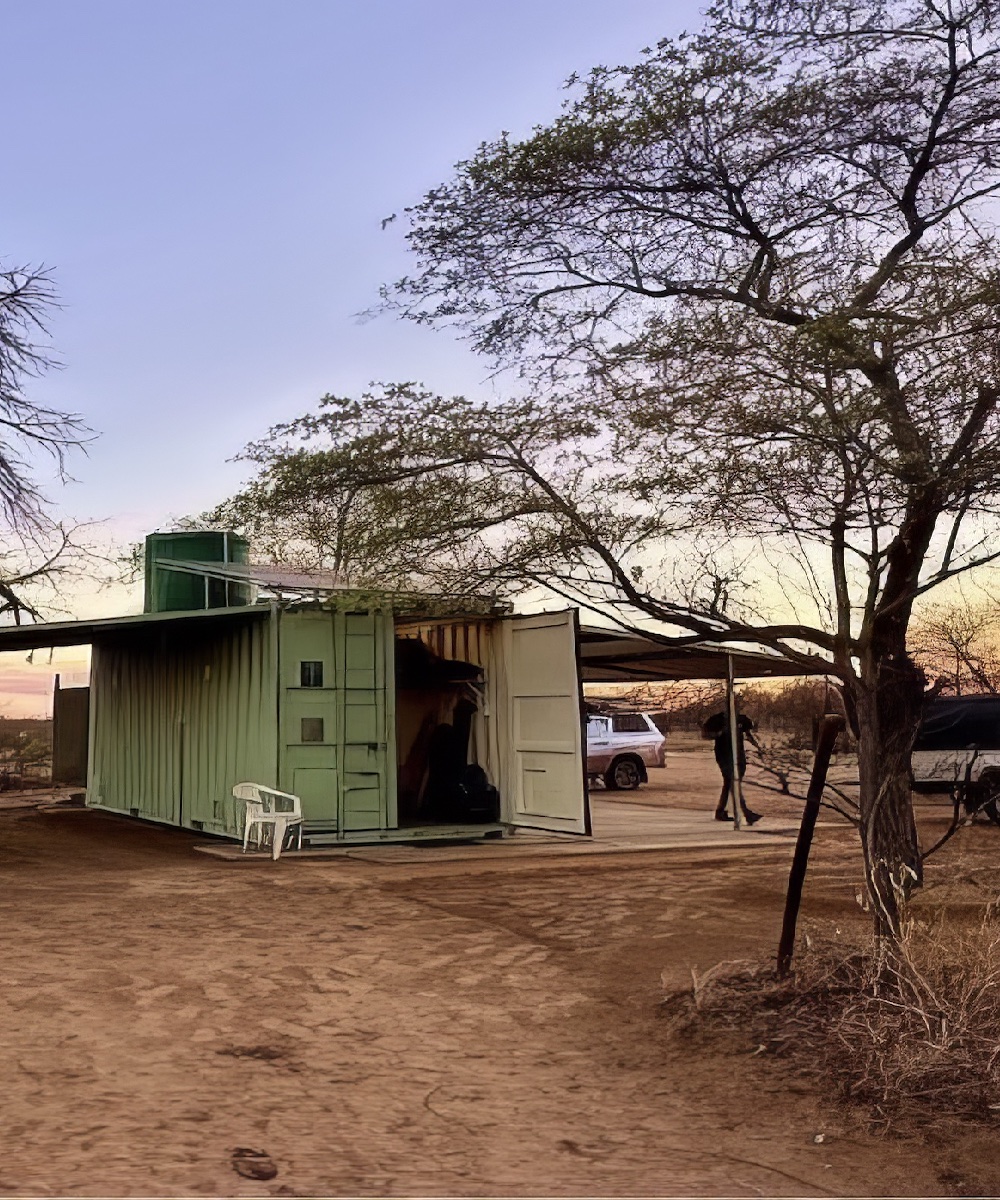
The future of the Nyae Nyae Pangolin Project
In 2022, the NNPP received approval from the Ju/'hoansi Traditional Authority and Nyae Nyae Conservancy to establish a research camp and expand their work across the communities. Since the NNPP plans to employ one ranger in every village of the conservancy by 2028, it was necessary to offer a more stable base than camping from a vehicle. Thanks to many generous donors, PCRF received a fitted container and infrastructure for the research camp. The camp was officially opened on 30 September 2023 and will host local and international students conducting research on endangered species in the NNC. This year, PCRF is excited to participate in the Great Southern BioBlitz (24-27 November 2023), for the first time representing the greater Nyae Nyae area. Goals for 2024 include plans to host a training event for women and children on how to make gardens that are wildlife proof and productive, based on our demonstration garden.
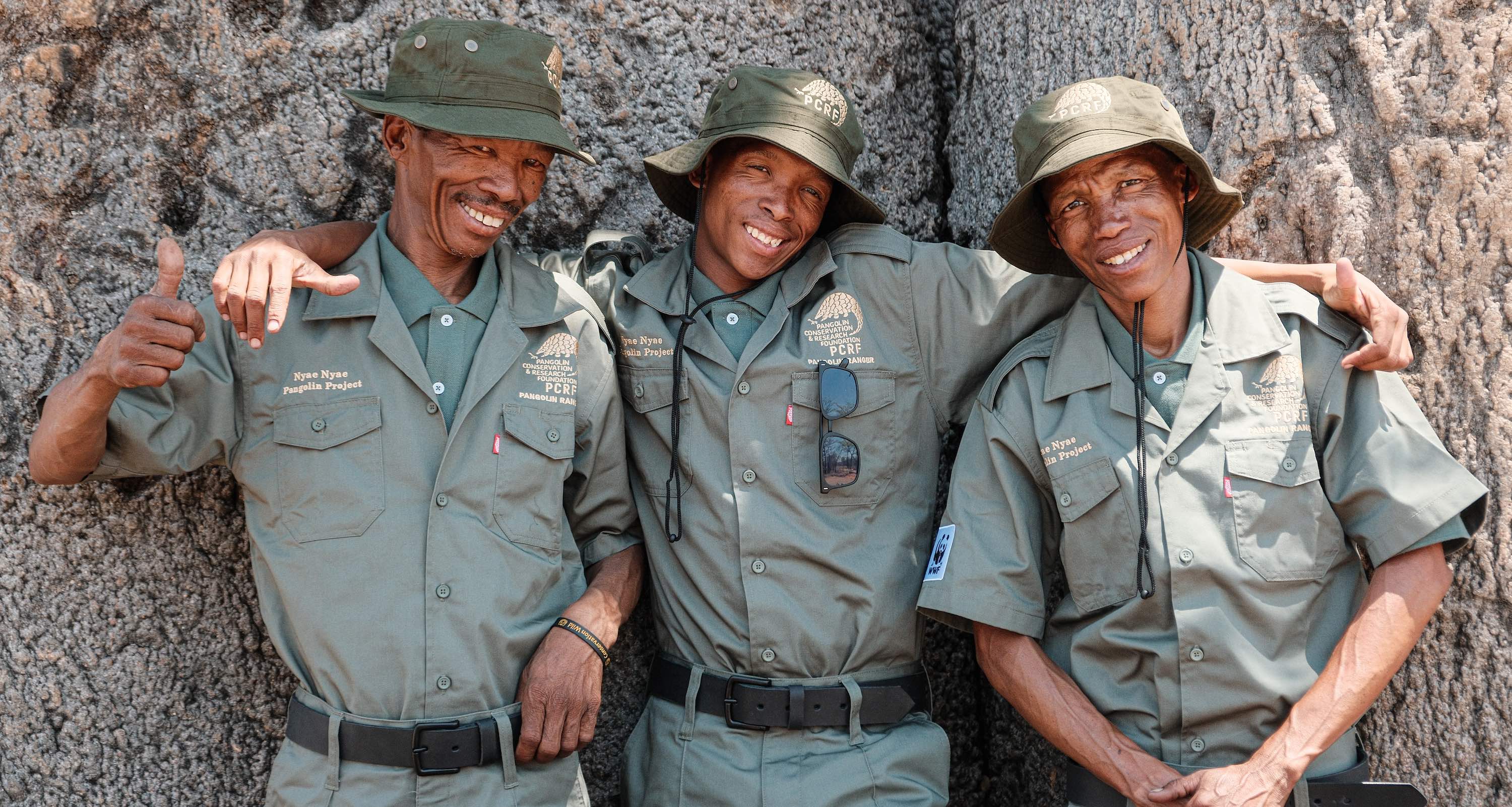
Acknowledgments and collaboration
Kelsey Prediger is the Founder and Executive Director of the Pangolin Conservation and Research Foundation and co-chair for Southern Africa of the IUCN SSC Pangolin Specialist Group. Find out more about the PCRF at pangolincrf.org, and see other articles by Kelsey Prediger on her Conservation Namibia author page. This research was conducted through multiple projects under her leadership with support from Kenneth /Uiseb, Novald Iyambo and Piet Beytell of the Ministry of Environment, Forestry, and Tourism, Dr. Morgan Hauptfleisch of the Namibia University of Science and Technology and Dr. Monique MacKenzie and Dr. Lindesay Scott-Hayworth of the University of St. Andrews, Scotland.
Sponsors and Donors
The following long-term supporters of PCRF help keep the Nyae Nyae Pangolin Project going: Bushwhackers, Galanthus Foundation, Ju/'hoansi Traditional Authority, Ministry of Environment, Forestry, and Tourism, Camping Hire Namibia, Namibia Car Rental, Namibian Chamber of Environment, Namibian Pangolin Working Group, Namibia2Go, North American Pangolin Consortium, Namibia University of Science and Technology, Nyae Nyae Conservancy, Oak Foundation, Otto Herrigel Environmental Trust, Brookfield Zoo, Vienna Zoo, Pelorus Foundation, the Pupkewitz Foundation, the University of St. Andrews, WWF International and WWF Namibia.
Every component of the research camp was generously donated by the following local sponsors and donors: Absolute Logistics (Pty) Ltd, Aqua Services and Engineering (Pty) Ltd, Avril Payment Solutions (Pty) Ltd, Ben D'Alton, GI Construction (Pty) Ltd, Henning Crushers (Pty) Ltd, KL Construction (Pty) Ltd, Mandume Park Investments 31 CC, Metallum Fabrication (Pty) Ltd, Radio Electronic (Pty) Ltd, SN Architects, Store - Tech CC, WML Consulting Engineers (Pty) Ltd, Almut Boye, Leon Boye, Hartmut Rechholtz, Marco Selle, Sandra Kurth, Stephen Kenny. Additionally, we would like to thank our generous international supporters: Brookfield Zoo, Chicago Zoological Society, North American Pangolin Consortium, and every individual who donated to the GoFundMe campaign to cover the additional infrastructure.
For articles on similar topics, please click one of the following options:
For more great articles from Conservation Namibia see below...
Conservation Namibia brought to you by:
We use cookies to monitor site usage and to help improve it. See our Privacy Policy for details. By continuing to use the site, you acknowledge acceptance of our policy.


